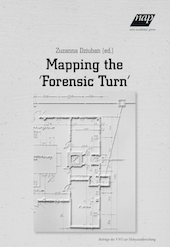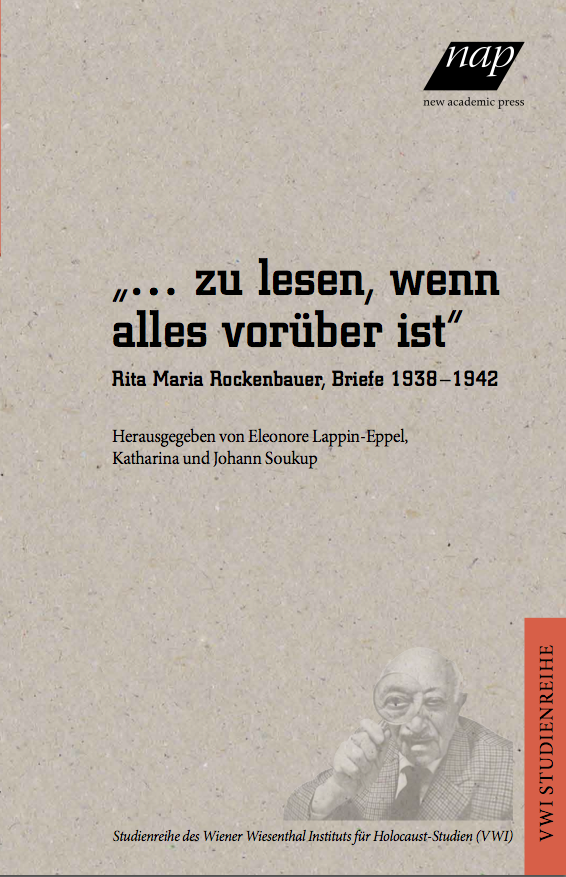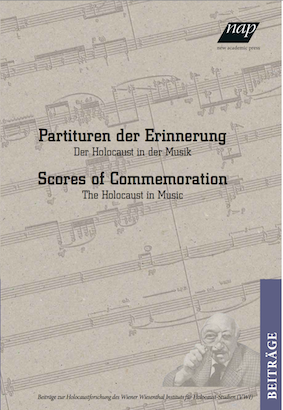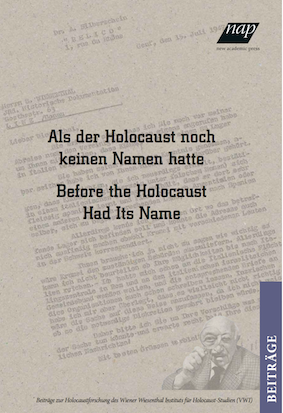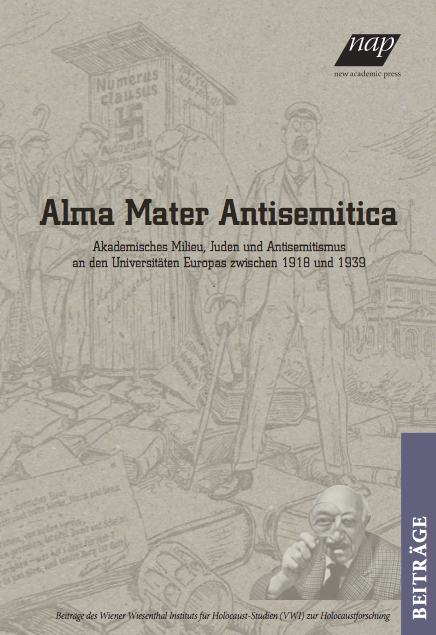 This contribution describes and analyses the activities of two expert committees on Jewish politics and analysis of the present age, which were established in New York in 1940 and 1941. The Research Institute on Peace and Post-War Problems and the Institute of Jewish Affairs were meeting places for Jewish people who worked on political strategy papers on how to address the apocalyptic presence of the extermination of the European Jews, based on their range of experiences during the interwar period. They were modelled on the tradition of East European minority protection policies and the Jewish defence against antisemitism in the Weimar Republic; it was their aim to debate the possibilities for saving the Jews as well as the future of Jewish existence. Their activities resulted in the collection of wide-ranging documentation and many reports on the reality of Nazism. These documents are significant sources of information on the immediate effect of the events on contemporaries and bear witness to the attempts to act, understand, report, remember the victims and at the same time design a new Jewish life after the catastrophe in America while war and extermination were still going on.
This contribution describes and analyses the activities of two expert committees on Jewish politics and analysis of the present age, which were established in New York in 1940 and 1941. The Research Institute on Peace and Post-War Problems and the Institute of Jewish Affairs were meeting places for Jewish people who worked on political strategy papers on how to address the apocalyptic presence of the extermination of the European Jews, based on their range of experiences during the interwar period. They were modelled on the tradition of East European minority protection policies and the Jewish defence against antisemitism in the Weimar Republic; it was their aim to debate the possibilities for saving the Jews as well as the future of Jewish existence. Their activities resulted in the collection of wide-ranging documentation and many reports on the reality of Nazism. These documents are significant sources of information on the immediate effect of the events on contemporaries and bear witness to the attempts to act, understand, report, remember the victims and at the same time design a new Jewish life after the catastrophe in America while war and extermination were still going on.
Editorial
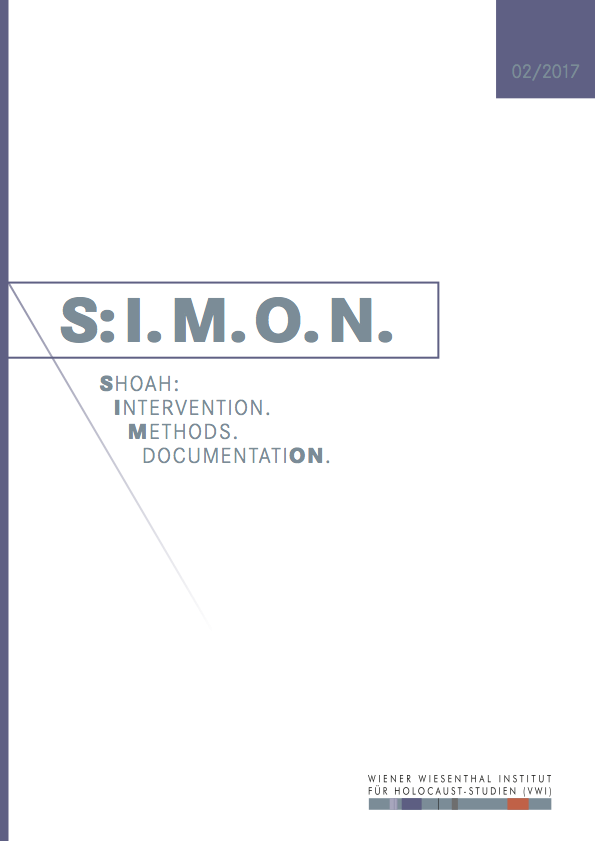 S:I.M.O.N. is an e-journal of the Vienna Wiesenthal Institute for Holocaust Studies (VWI). It appears twice a year in English and German language. S:I.M.O.N. aims at both a transnational and comparative history of the Holocaust and Jewish Studies in Central and Eastern Europe within the broader contexts of the European history of the 20th and 21st century, including its prehistory, consequences and legacies as well as the history of memory.
S:I.M.O.N. is an e-journal of the Vienna Wiesenthal Institute for Holocaust Studies (VWI). It appears twice a year in English and German language. S:I.M.O.N. aims at both a transnational and comparative history of the Holocaust and Jewish Studies in Central and Eastern Europe within the broader contexts of the European history of the 20th and 21st century, including its prehistory, consequences and legacies as well as the history of memory.
S:I.M.O.N. serves as a forum for discussion of various methodological approaches. The journal especially wishes to strengthen the exchange between researchers from different scientific communities and to integrate both the Jewish history and the history of the Holocaust into the different “national” narratives. It also lays a special emphasis on memory studies and the analysis of politics of memory. S:I.M.O.N. uses a double-blind review system, which means that both the reviewer’s and the author’s identities are concealed from each other hroughout the review process.
Shoah: The journal deals with the history of the Shoah from multidisciplinary, transnational and comparative perspectives. It seeks to integrate studies on Jews as well as on other groups of victims of the Holocaust, especially on Roma, and of so far less researched regions of (East) Central and (South) Eastern Europe.
Intervention. The journal reports on research projects and their transmission into public events. It also informs about current educational and remembrance programs.
Methods. The journal serves as a forum for the discussion of methodological approaches as, for instance, the everyday history, oral history, gender history, the history of violence, anti-Semitism and racism and the theory of memory and memory politics.
DocumentatiON. The journal contributes to critical approaches on using and interpreting archival materials in the 21st century.
Download the current issue S:I.M.O.N. 2017/2.
Articles
 This article outlines the principal directions of my research: It focuses on the interplay of antisemitism and fascism in the ideology of the legionary movement in inter-war Romania as well as on the virtual consensus on antisemitism that was established in the 1930s as a result of the support for the movement received from most of the representatives of the ‘new generation’ of Romanian intellectuals. This consensus was pivotal in desensitising the general population towards the plight of Romanian Jews and making it possible for the discriminatory measures to gradually escalate into outright policies of extermination. Thus my research demonstrates the responsibility held by the legionary movement even though they were not directly involved in the Romanian wartime Holocaust perpetrated by the Antonescu regime: The legionary movement nevertheless promoted an antisemitic discourse that was much more extreme than that of all its predecessors and contemporaries, advocating a radical exclusion with genocidal overtones. Moreover, while being as ideological and abstract as its Nazi counterpart, legionary antisemitism posited religion rather than race as the basis for the exclusion of the Jews in line with the ideology of a movement that presented itself as ‘spiritual’ and ‘Christian’. The legionary exclusion based on religion proved as violent and murderous as the one based on race, both before and during the movement‘s time in power. As such, the evidence from the Romanian case study can serve to nuance and even challenge existing interpretations that identify only racist antisemitism as genocidal.
This article outlines the principal directions of my research: It focuses on the interplay of antisemitism and fascism in the ideology of the legionary movement in inter-war Romania as well as on the virtual consensus on antisemitism that was established in the 1930s as a result of the support for the movement received from most of the representatives of the ‘new generation’ of Romanian intellectuals. This consensus was pivotal in desensitising the general population towards the plight of Romanian Jews and making it possible for the discriminatory measures to gradually escalate into outright policies of extermination. Thus my research demonstrates the responsibility held by the legionary movement even though they were not directly involved in the Romanian wartime Holocaust perpetrated by the Antonescu regime: The legionary movement nevertheless promoted an antisemitic discourse that was much more extreme than that of all its predecessors and contemporaries, advocating a radical exclusion with genocidal overtones. Moreover, while being as ideological and abstract as its Nazi counterpart, legionary antisemitism posited religion rather than race as the basis for the exclusion of the Jews in line with the ideology of a movement that presented itself as ‘spiritual’ and ‘Christian’. The legionary exclusion based on religion proved as violent and murderous as the one based on race, both before and during the movement‘s time in power. As such, the evidence from the Romanian case study can serve to nuance and even challenge existing interpretations that identify only racist antisemitism as genocidal.
SWL-Reader
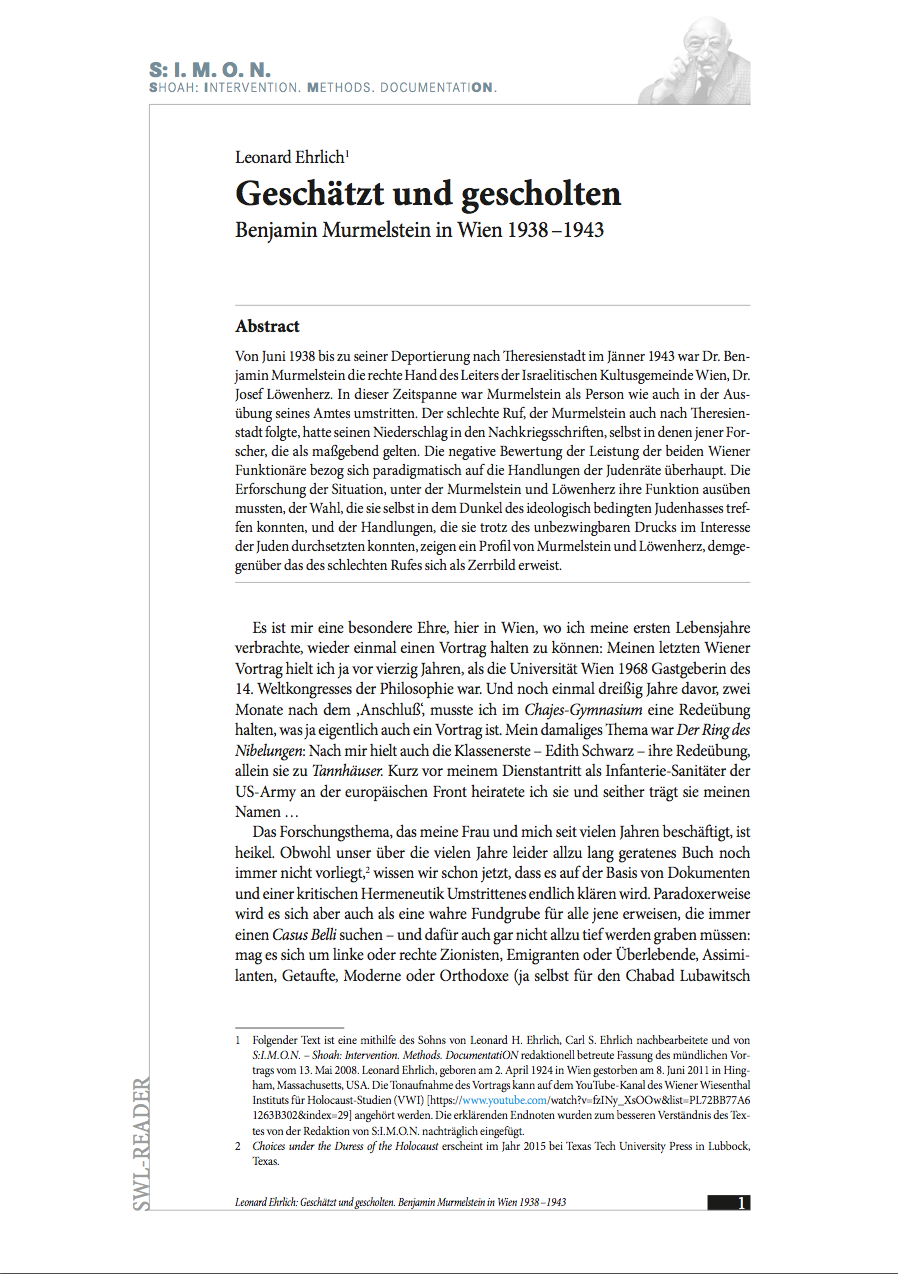 Between June 1938 and his deportation to Theresienstadt in January 1943, Dr. Benjamin Murmelstein acted as the right hand man of Dr. Josef Löwenherz, the head of the Jewish Community in Vienna. Both Murmelstein as a person and the manner in which he executed his office were regarded with some controversy during this time. Murmelstein's bad reputation even remained with him in Theresienstadt; it also affected post-war writings, including those of highly respected researchers. The negative assessment of the two Viennese officials essentially applies to the actions of the Jewish Councils in general. Research into the situation in which Murmelstein and Löwenherz had to execute their offices, into the choices that were available to them even in the darkness of ideologically determined hatred of the Jews and into what they were able to achieve in the interests of the Jews despite the indomitable pressure upon them reveal a different picture of Murmelstein and Löwenherz: their bad reputation is shown to be a distortion.
Between June 1938 and his deportation to Theresienstadt in January 1943, Dr. Benjamin Murmelstein acted as the right hand man of Dr. Josef Löwenherz, the head of the Jewish Community in Vienna. Both Murmelstein as a person and the manner in which he executed his office were regarded with some controversy during this time. Murmelstein's bad reputation even remained with him in Theresienstadt; it also affected post-war writings, including those of highly respected researchers. The negative assessment of the two Viennese officials essentially applies to the actions of the Jewish Councils in general. Research into the situation in which Murmelstein and Löwenherz had to execute their offices, into the choices that were available to them even in the darkness of ideologically determined hatred of the Jews and into what they were able to achieve in the interests of the Jews despite the indomitable pressure upon them reveal a different picture of Murmelstein and Löwenherz: their bad reputation is shown to be a distortion.
Events
Miloslav Szabó
Ein ‚antislowakischer' Oscar-Film? Zur Darstellung des Holocaust im tschechoslowakischen Film Obchod na korze
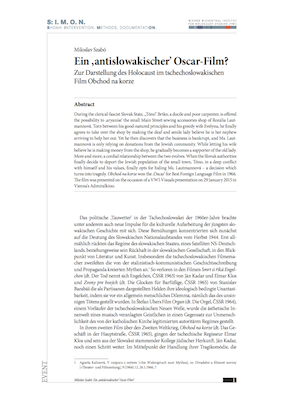 During the clerical-fascist Slovak State, "Tóno" Brtko, a docile and poor carpenter, is offered the possibility to 'aryanise' the small Main Street sewing accessories shop of Rozália Lautmannová. Torn between his good-natured principles and his greedy wife Evelyna, he finally agrees to take over the shop by making the deaf and senile lady believe he is her nephew arriving to help her out. Yet he then discovers that the business is bankrupt, and Ms. Lautmannová is only relying on donations from the Jewish community. While letting his wife believe he is making money from the shop, he gradually becomes a supporter of the old lady. More and more, a cordial relationship between the two evolves. When the Slovak authorities finally decide to deport the Jewish population of the small town, Tóno, in a deep conflict with himself and his values, finally opts for hiding Ms. Lautmannová – a decision which turns into tragedy. Obchod na korze won the 'Oscar' for Best Foreign Language Film in 1966. The film was presented on the occasion of a VWI-Visuals presentation on 29 January 2015 in Vienna's Admiralkino.
During the clerical-fascist Slovak State, "Tóno" Brtko, a docile and poor carpenter, is offered the possibility to 'aryanise' the small Main Street sewing accessories shop of Rozália Lautmannová. Torn between his good-natured principles and his greedy wife Evelyna, he finally agrees to take over the shop by making the deaf and senile lady believe he is her nephew arriving to help her out. Yet he then discovers that the business is bankrupt, and Ms. Lautmannová is only relying on donations from the Jewish community. While letting his wife believe he is making money from the shop, he gradually becomes a supporter of the old lady. More and more, a cordial relationship between the two evolves. When the Slovak authorities finally decide to deport the Jewish population of the small town, Tóno, in a deep conflict with himself and his values, finally opts for hiding Ms. Lautmannová – a decision which turns into tragedy. Obchod na korze won the 'Oscar' for Best Foreign Language Film in 1966. The film was presented on the occasion of a VWI-Visuals presentation on 29 January 2015 in Vienna's Admiralkino.
Elisabeth Gallas: „Facing a crisis unparalleled in history“. Jüdische Reaktionen auf den Holocaust aus New York, 1940 bis 1945
„... zu lesen, wenn alles vorüber ist“
Rita Maria Rockenbauer, Briefe 1938 –1942
Wien 2014
Partituren der Erinnerung.
Der Holocaust in der Musik
Scores of Commemoration.
The Holocaust in Music
Wien 2015
Before the Holocaust Had Its Name. Early Confrontations of the Nazi Mass Murder of the Jews
Wien 2016
Akademisches Milieu, Juden und Antisemitismus an den Universitäten Europas zwischen 1918 und 1939
Academic Milieu, Jews and Antisemitism at European Universities between 1918 and 1939
Wien 2016


